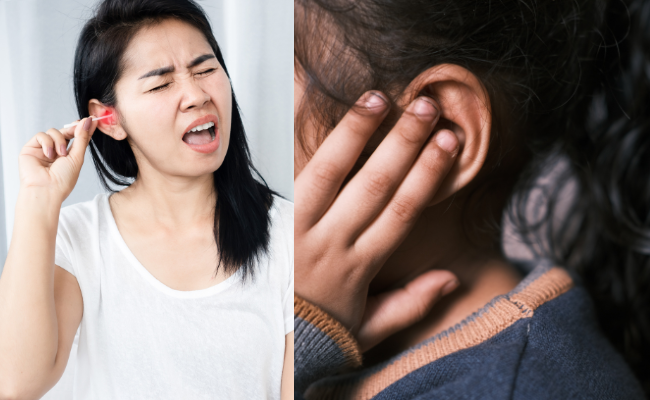How to Treat Insect Inside The Ear?
- November 10, 2023
- No Comments

What is an Insect Inside The Ear?
Encountering an insect inside the ear is an unsettling and distressing experience. It occurs when a small insect, such as a fly, mosquito, or ant, makes its way into the ear canal. The confined space and proximity to the eardrum can cause discomfort, pain, and anxiety.
Why Does an Insect Enter The Ear?
Insects may enter the ear canal for various reasons. Common scenarios include outdoor activities where insects are prevalent, sleeping in open environments or exposure to environments with a high insect population. The ear, with its warmth and darkness, may be perceived by insects as a shelter or a source of moisture.
How Does an Insect Inside The Ear Manifest?
The presence of an insect in the ear may be accompanied by immediate symptoms such as a buzzing or fluttering sound, pain, a sensation of fullness, and potential difficulty hearing. Individuals may also experience anxiety and a desire to remove the intruder promptly.
Treatment Solutions for an Insect Inside The Ear:
- Stay Calm: It is crucial to stay calm when aware of an insect inside the ear. Panicking can exacerbate the situation and make it challenging to address effectively.
- Do Not Use Objects: Avoid inserting objects such as cotton swabs or tweezers into the ear in an attempt to remove the insect. This can push the insect further inside or cause injury to the ear canal.
- Tilt Your Head: Tilt the affected ear towards the ground to allow gravity to potentially help the insect exit on its own. Gently shake your head or tap the side of your head to encourage the insect to move out.
- Use Gravity: Lie down on your side with the affected ear facing down. This position may facilitate the insect's exit due to gravity.
- Irrigation with Warm Water: Gently irrigate the ear with warm water using a bulb syringe. The flow of water may help flush out the insect. Ensure the water is at body temperature to avoid dizziness or discomfort.
- Oil Drops: Applying a few drops of mineral oil, baby oil, or olive oil into the ear can create an environment that may encourage the insect to come out. Lie down for a few minutes to allow the oil to reach the insect.
- Seek Medical Assistance: If the insect does not come out with home remedies, it is advisable to seek medical assistance. A healthcare professional, such as an Ear, Nose, and Throat (ENT) specialist, can use specialized tools to safely remove the insect.
- Avoid Insecticides: Refrain from using insecticides or other chemical solutions in an attempt to kill the insect. This can lead to further complications and should be avoided.
Benefit Points of Treating an Insect Inside The Ear:
- Relief from Discomfort: Effective treatment provides relief from the discomfort, pain, and anxiety associated with the presence of an insect in the ear.
- Prevention of Complications: Prompt and proper treatment helps prevent potential complications, such as injury to the ear canal or eardrum, which may arise from misguided removal attempts.
- Preservation of Hearing: Ensuring the safe removal of the insect contributes to the preservation of hearing function and prevents any potential damage to the delicate structures of the ear.
- Avoidance of Infection: Proper treatment reduces the risk of infection, as scratches or injuries caused by attempts to remove the insect can serve as entry points for bacteria.
- Minimized Anxiety: Addressing the situation effectively minimizes anxiety and stress associated with the unsettling experience of having an insect inside the ear.
- Professional Expertise: Seeking medical assistance ensures that the removal is performed by a healthcare professional with the expertise and tools necessary for a safe and effective procedure.
- Educational Awareness: Encountering an insect in the ear raises awareness about preventive measures, such as using earplugs in outdoor settings or while sleeping, to reduce the likelihood of future incidents.
- Peace of Mind: Successful treatment offers peace of mind, knowing that the situation has been addressed appropriately and that potential complications have been averted.
Comments (0)